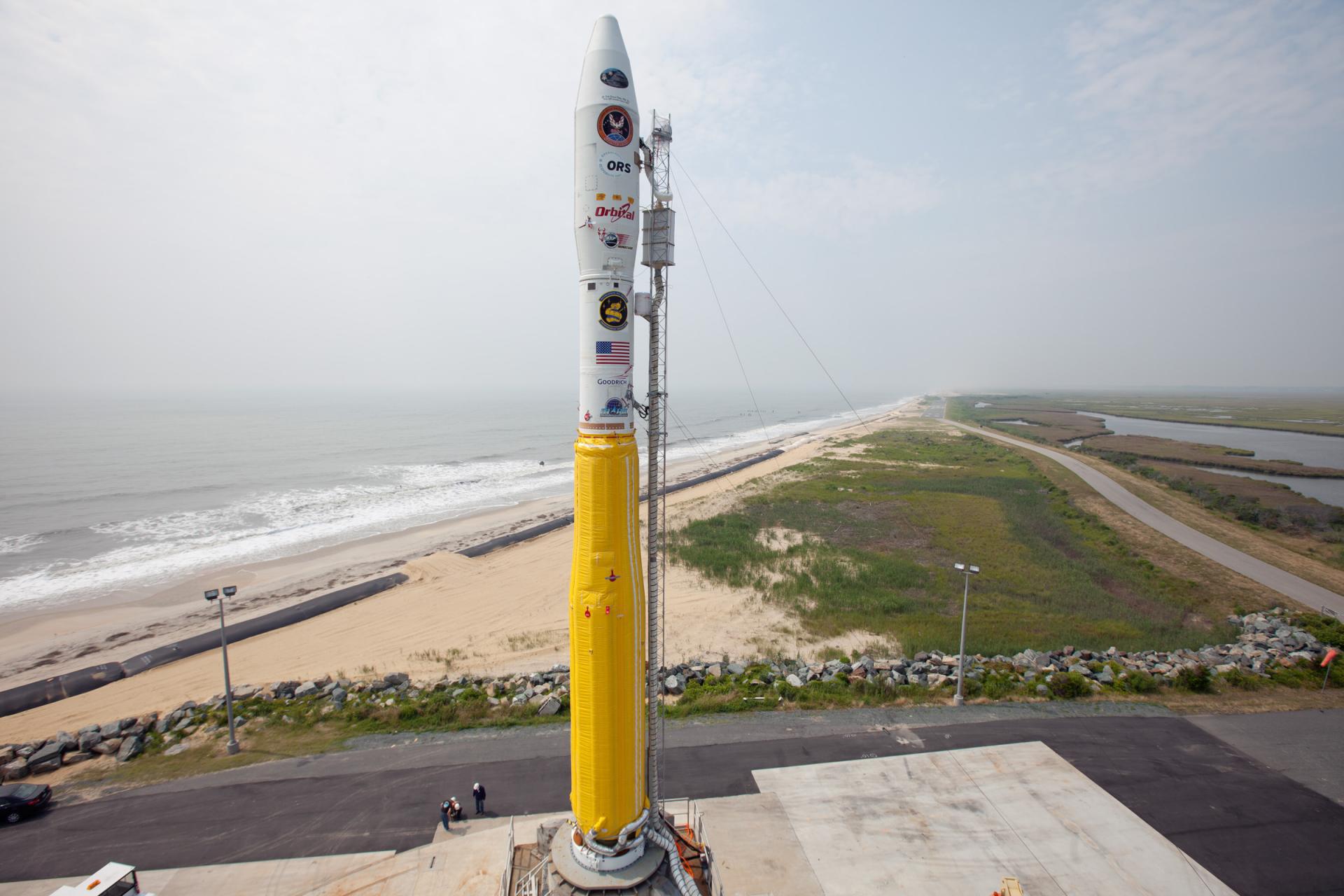
Minotaur I
ActiveOrbital Sciences Corporation (OSC)
Jan. 27, 2000
Description
The Minotaur I launch system is derived from converted Minuteman II ICBMs and is used to launch small satellites for the US Government. The first and second stages, taken directly from decommissioned Minuteman missiles, are mated to the Orion third and fourth stages taken from the Pegasus XL air-launched rocket family. An optional hydrazine-powered fifth stage called HAPS can be used.The Minotaur I launch system is derived from converted Minuteman II ICBMs and is used to launch small satellites for the US Government. An optional hydrazine-powered fifth stage called HAPS can be used.
Specifications
-
Minimum Stage
4 -
Max Stage
5 -
Length
19.21 m -
Diameter
1.67 m -
Fairing Diameter
― -
Launch Mass
36.0 T -
Thrust
935.0 kN
Family
-
Name
Minotaur I -
Family
― -
Variant
― -
Alias
Minotaur OSP-SLV -
Full Name
Minotaur I
Payload Capacity
-
Launch Cost
― -
Low Earth Orbit
580.0 kg -
Geostationary Transfer
Orbit
― -
Direct Geostationary
― -
Sun-Synchronous Capacity
331.0 kg
Orbital Sciences Corporation
Commercial
None
OSCMinotaur I | NROL-111
Orbital Sciences Corporation | United States of AmericaWallops Flight Facility, Virginia, USA
June 15, 2021, 1:35 p.m.
Minotaur I | ORS-3
Orbital Sciences Corporation | United States of AmericaWallops Flight Facility, Virginia, USA
Nov. 20, 2013, 1:15 a.m.
Minotaur I | ORS-1 (USA-231)
Orbital Sciences Corporation | United States of AmericaWallops Flight Facility, Virginia, USA
June 30, 2011, 3:09 a.m.
Minotaur I | NROL-66 (RPP) (USA-225)
Orbital Sciences Corporation | United States of AmericaVandenberg SFB, CA, USA
Feb. 6, 2011, 12:26 p.m.
Status: Launch Successful
Mission:
USA-225, also known as the Rapid Pathfinder Prototype (RPP) and NRO Launch 66 (NROL-66), is an American satellite which was launched in 2011. The satellite is being used to perform technology demonstration and development experiments, including advanced dosimeters to characterize the space environment from a 1,200 kilometer low Earth orbit. It is operated by the United States National Reconnaissance Office.
Low Earth OrbitMinotaur I | Tacsat 3
Orbital Sciences Corporation | United States of AmericaWallops Flight Facility, Virginia, USA
May 19, 2009, 11:55 p.m.
Minotaur I | NFIRE
Orbital Sciences Corporation | United States of AmericaWallops Flight Facility, Virginia, USA
April 24, 2007, 6:48 a.m.
Minotaur I | Tacsat 2
Orbital Sciences Corporation | United States of AmericaWallops Flight Facility, Virginia, USA
Dec. 16, 2006, noon
Minotaur I | COSMIC 1-6
Orbital Sciences Corporation | United States of AmericaVandenberg SFB, CA, USA
April 15, 2006, 1:40 a.m.
Status: Launch Successful
Mission:
In early 2001, the National Space Program Office (NSPO) of Taiwan, Republic of China, selected Orbital for a $56 million contract for the ROCSAT-3/COSMIC (Republic of China Satellite / Constellation Observing System for Meteorology, Ionosphere and Climate) program. ROCSAT was renamed FORMOSAT in December 2004. The FORMOSAT-3/COSMIC program is an international collaboration between Taiwan and the United States that will use a constellation of six remote sensing microsatellites to collect atmospheric data for weather prediction and for ionosphere, climate and gravity research. Data from the satellites will be made freely available to the international scientific community in near real-time.
Low Earth OrbitMinotaur I | STP-R1
Orbital Sciences Corporation | United States of AmericaVandenberg SFB, CA, USA
Sept. 23, 2005, 2:24 a.m.
Minotaur I | XSS-11
Orbital Sciences Corporation | United States of AmericaVandenberg SFB, CA, USA
April 11, 2005, 1:35 p.m.
Minotaur I | Sindri
Orbital Sciences Corporation | United States of AmericaVandenberg SFB, CA, USA
July 19, 2000, 8:09 p.m.
Minotaur I | JAWSAT & FalconSat 1
Orbital Sciences Corporation | United States of AmericaVandenberg SFB, CA, USA
Jan. 27, 2000, 3:03 a.m.
Status: Launch Successful
Mission:
The JAWSAT (Joint Air Force Academy / Weber State University Satellite) project was developed by students working alongside aerospace professionals. Initially designed with a pulsed-plasma thruster to train Air Force Academy cadets (see JAWSAT), the mission has since evolved to include the efforts of several universities, local aerospace companies, the Air Force Academy, the Air Force Research Laboratory, and NASA. Utilizing breakthrough technologies, JAWSAT deployed four satellites when it reached orbit. The onboard imaging system recorded the deployment of each payload with its six digital cameras. The first free-flying Academy satellite, FalconSat-1 carried the CHAWS (Charging Hazards and Wake Studies) experiment developed by the Physics Department at the Academy.
Low Earth OrbitElectron
Don't Be Such A Square (STP-S30)
Rocket Lab Launch Complex 2 (Launch Area 0 C) - Wallops Flight Facility, Virginia, USASTP-S30 is a complex mission that will deliver research experiments and technology demonstrations to orbit for the DoD and contribute to future space…
Falcon 9
Starlink Group 15-13
Space Launch Complex 4E - Vandenberg SFB, CA, USAA batch of 27 satellites for the Starlink mega-constellation - SpaceX's project for space-based Internet communication system.
Falcon 9
Starlink Group 6-99
Launch Complex 39A - Kennedy Space Center, FL, USAA batch of 29 satellites for the Starlink mega-constellation - SpaceX's project for space-based Internet communication system.
Ariane 62
Galileo L14 (FOC FM33 & FM34)
Ariane Launch Area 4 - Guiana Space Centre, French GuianaPayload consists of two satellites for Europe's Galileo navigation system.
Atlas V 551
Amazon Leo (LA-04)
Space Launch Complex 41 - Cape Canaveral SFS, FL, USAAmazon Leo, formerly known as Project Kuiper, is a mega constellation of satellites in Low Earth Orbit that will offer broadband internet access, thi…

